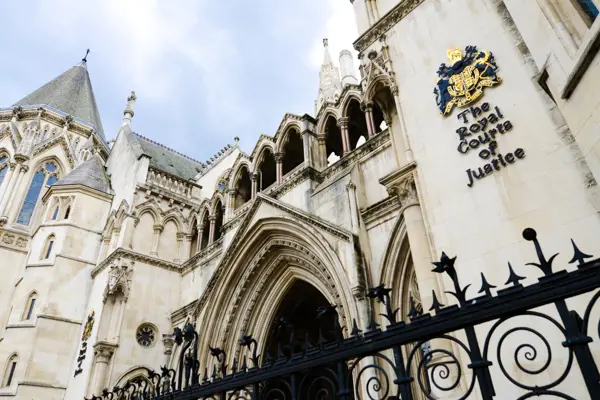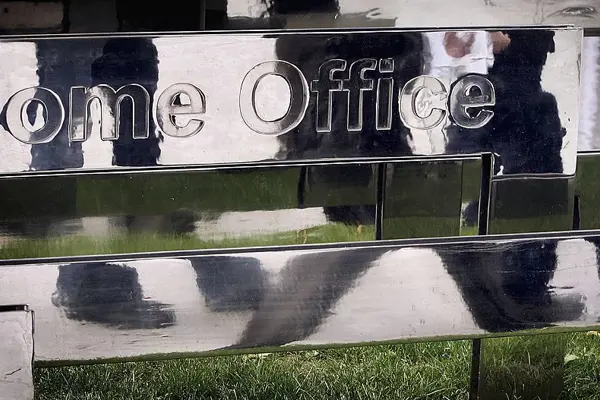
The Digital Gold Rush for cryptocurrency and the Environmental Damage it causes
This blog explores the challenges and risks that the crypto mining industry continues to pose to the environment and surrounding local communities after the EU Markets in Crypto-Assets (MiCA) regulation came into force in June 2023.
Posted on 17 October 2023
The Digital Gold Rush is a phrase that refers to the rapid development of digital currencies, (cryptocurrencies) in recent years.
In 1982 American cryptographer David Chaum published pioneering essays and founded the International Association for Cryptologic Research, an institute that researches into the development of digital cryptography.
However, it was only until after the financial crash of 2008 that cryptocurrency started to attract public attention, when the huge decline in value of traditional, paper money resulted in a call for a decentralised form of currency. In 2008, the pseudonymous Satoshi Nakamoto published the whitepaper: Bitcoin: A Peer-to-Peer Electronic Cash System. In 2009, Bitcoin was launched.
What is Crypto Mining?
Cryptocurrency is a decentralised, peer-to-peer version of electronic cash that allows payments to be made directly from one party to another without any mediators. It is not regulated by any central government authorities. Crypto mining is the process by which transactions are verified and added to the public ledger (or “blockchain”). Miners who verify the individual transactions first are issued new coins (“electronic cash”).
Crypto mining has been mired in controversy as the process is hugely energy intensive. According to Schmidt and Curry (2022), Bitcoin – the best-known cryptocurrency – is estimated to consume 127 TWh of electricity per year, which is more than many countries.
Some cryptocurrencies are more carbon intensive than others. It is the proof-of-work (PoW) blockchains, such as Bitcoin, that are hugely carbon intensive. PoW is the method miners use to verify transactions and get rewarded with crypto coins. Crypto miners of PoW blockchains must solve complex mathematical problems to verify transactions. As the mathematical problems to verify transactions become increasingly more difficult over time, more computer power is required and energy consumption increases.
In 2009, a person could mine Bitcoin with a home computer in just a few seconds. Now, mining a single Bitcoin could take anywhere from 10 minutes to 30 days depending on the capacity of the hardware being used. The abundance and quality of the computer hardware determines the time it takes to mine a single coin. The more energy used, the quicker the process is and the more profitable crypto mining becomes.
In 2021 Greenpeace halted their acceptance of cryptocurrency donations due to these environmental concerns and Greenpeace USA is now a partner of the “Change the code, not the climate” campaign.
Thinking Global: Decarbonising Crypto
Cryptocurrencies boldly promise a future free from centrally controlled fiat currencies that derive their value through trust in the governments that issued them and are encumbered by the borders and regulations of the physical world. However, all digital infrastructure is dependent on tangible infrastructure, which demands energy and impacts – typically negatively – natural environments and citizens.
Crypto miners anchor to places where there is relaxed regulation and cheaper electricity. In 2021 China banned crypto mining due to a desire to cut down carbon emissions. The ban resulted in miners relocating their activities elsewhere - notably to Kazakhstan and the United States. At the time, this resulted in the Bitcoin network’s use of renewable energy dropping from 42% in 2020 to 25% in August 2021. According to the Bitcoin Mining Council, as of January 2023, Bitcoin’s use of renewable energy is at an estimated 58.9%. However, analysis of events in 2021 highlight the fragility of the industry and the difficulties that arise when there is not a comprehensive international approach to regulating the industry’s carbon footprint.
Proponents of crypto mining continue to stress that “energy consumption is not equivalent to carbon emissions”. The Crypto Climate Accord (CCA) is a non-profit, private-sector led initiative for the entire crypto community focused on eliminating carbon emissions within the industry by 2030. More than 250 companies and individuals have joined the CCA as Supporters. Inspired by the Paris Climate Agreement 2015 the initiative is a start. However, regardless of these attempts, there is already a global deficit of clean energy to power our homes, cities, and businesses. If not properly regulated, it is probable that some industries and cities may become more dependent on fossil fuels if crypto mining plants monopolise the renewable energy sources available.
In June 2023, the Markets in Crypto-Assets (MiCA) regulation came into force and was published in the Official Journal of the European Union after the European Council unanimously voted in favour of the regulation. This makes the EU the first major bloc jurisdiction with a comprehensive set of cryptocurrency regulations. The regulations include supervisory provisions for digital assets, consumer protection and environmental safeguarding. Recognition of the environmental impact of crypto assets is significant. It will be interesting to see what the future holds for crypto mining activities in Europe.
Thinking Local: Threats to Local Communities and Environments
Numerous threats to the surrounding local communities and environments of crypto mining plants have been recognised in North America.The Chelan County Columbia basin in the U.S. state of Washington has been an attractive place for miners since around 2014 due to the subsidised electricity generated by the hydroelectric dams in the area.
The rise of crypto mining plants in the Chelan County led to a reduction in funding available for public services. Less power was available at the premium prices and so the electricity price for consumers increased. Further, the electrical infrastructure could not cope with the increased power loads the crypto mining plants created. This caused numerous blackouts and raised safety concerns regarding the inadvertent ignition of grass fires. The strain on the electrical infrastructure was exacerbated by the rise of illegal crypto mining operations which began in peoples’ homes. These illegal operations are incredibly difficult to detect and contributed to the safety threats to the community.
In March 2018, the Chelan County Public Utility District placed a moratorium on new applications for crypto mining operations. Still tackling the issue, in June 2022 the Chelan County PUD Commissioners approved a 29% increase in electricity cost required for cryptocurrency miners.
The threat to consumers’ access to electricity has not only been felt in Chelan County, Washington. Tehran has frequently faced power outages and Kazakhstan, once the world’s second largest miner of Bitcoin, faced the same problem. Ultimately, the country had to turn to Russia for electricity supplies.
On the other side of the U.S., private equity firm Atlas Holdings bought the once abandoned Greenidge coal-fired plant and re-opened it as a natural gas plant in 2017. Instead of providing electricity to the nearby homes and businesses, a significant portion of Greenidge’s electricity is now used to mine bitcoin. In 2020, running at 13% capacity, Atlas’s bitcoin operations produced 243,103 tons of Carbon Dioxide (CO2), and Nitrogen Oxide (NOx) pollution rose tenfold. NOx is a poisonous gas which, at high levels, can lead to numerous respiratory diseases including emphysema and asthma. This pollutant is at the centre of the diesel emissions cases brought by Leigh Day.
The Greenidge Generation power plant is also allowed to draw in 139 million gallons of water and discharge 135 million gallons daily from Seneca Lake to cool servers. Opponents of Greenidge claim that water is returned to the lake at a much warmer temperature than usual which increases the development of harmful toxin-producing algae. Considering that several residents draw their drinking water from the lake, it is unsurprising that opponents of the plant have filed numerous lawsuits to prevent the expansion and operation of the mining facility.
In August 2023, a lawsuit brought by Earthjustice on behalf of Seneca Lake Guardian, Committee to Preserve the Finger Lakes and Sierra Club regarding the plant’s water discharge permit was dismissed. Judge Elizabeth A. Wolford of US District Court, Western District of New York, dismissed the lawsuit for “failure to state a claim”. This case is the fourth time that opponents have sued Greenidge in a state or federal court since 2016. Each time they have lost.
This story reflects the local environmental and social issues that crypto mining may raise as well as the potential legal barriers there are to effectively regulating the industry.
Anything new?
Without the necessary legal and regulatory tools, plus rigorous scrutiny to ensure corporations behave responsibly, extraction – whether historic, modern, of raw minerals or of crypto – is likely to lead to significant negative externalities.
However, hope can be found when reflecting on Leigh Day’s experience of holding traditional physical mining operations to account. In 2020 Leigh Day represented Zambian farmers in claims against Vedanta Resources Ltd for alleged damage to their land and waterways from copper mining effluent and emissions. In October 2020 Leigh Day filed a class action lawsuit against Anglo American South Africa Ltd on behalf of thousands of children and women who allege that they have suffered lead poisoning. It is argued that Anglo American did not take reasonable steps to prevent the poisoning of the local communities.
Final thoughts
The Organisation for Economic Co-operation and Development (OECD), supporting the United Nations in its 2030 Agenda for Sustainable Development, released a report in 2022 titled: “Environmental impact of digital assets: Crypto-asset mining and DLT consensus mechanisms”. The report highlights that renewable energy use within the industry will not be sufficient due to the opportunity cost to the use of renewables elsewhere in society. It emphasises the counterintuitive results of China banning crypto mining entirely and suggests that there needs to be international co-ordination to limit the environmental impacts of mining operations. Shifting operations from one geography to another does not solve the problem.
Domestic approaches to regulating crypto mining vary and no comprehensive global regulation currently exists. As domestic approaches continue to evolve, there is a risk that it will become increasingly more difficult to have cross-border coordination of regulations to protect the environment and local communities. Global cooperation is crucial to ensure that individual states and companies are held to account for harmful crypto policies and behaviours.
It is promising that the MiCA bill is now in force. Hopefully, this landmark piece of regulation will “pav[e] the way for an innovation-friendly crypto-regulation that can set standards worldwide” (MEP Stefan Berger).
The reality that mining causes environmental impacts and threats to local communities is not unprecedented. Though the process does not physically scar the Earth, crypto mining is still an extractive, resource-intensive process and legal structures are required to mitigate the risks.
We need to recognise that crypto mining can have similar environmental and social impacts to physical mines and apply similar regulatory tools as, though crypto mining is relatively new, the fight to regulate extractive industries is not. Let’s be prepared.



